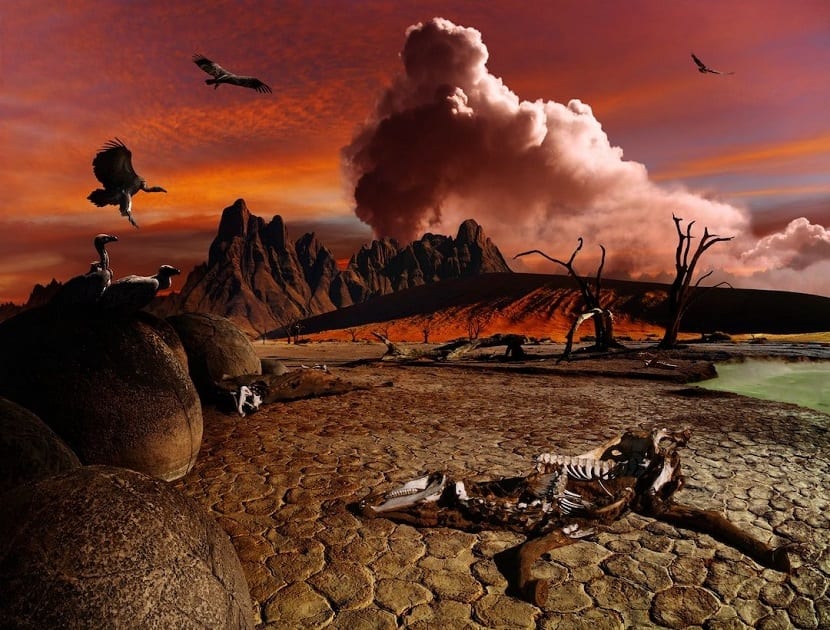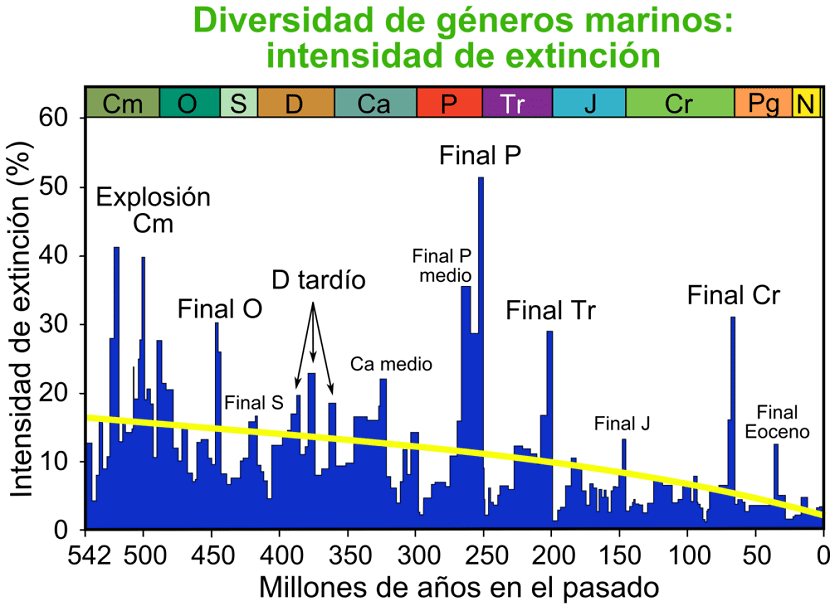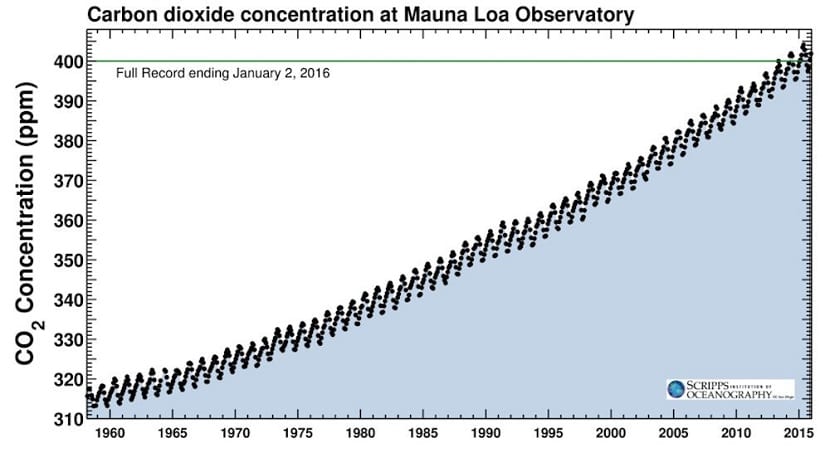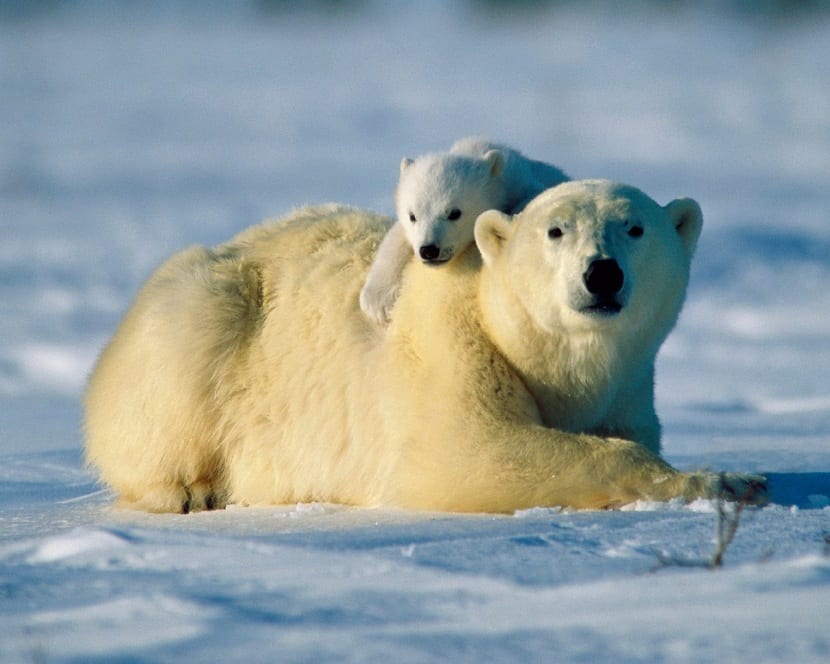
Over the years, the history of our planet has undergone great changes. Some have been mild and moderate, and others have been very rough and aggressive. Some of them have had to do with the extinction of many species. But why have there been times when many species have become massively extinct? Daniel Rothman, professor of geophysics in the Department of Atmospheric and Planetary Sciences at MIT, the Massachusetts Institute of Technology, has used mathematics to answer this question.
According to the predictions, In 2100 the oceans will store a total of 310 gigatons of carbon dioxide. One Gigaton is the same as 1.000.000.000.000 kilograms (one trillion). It is enough to trigger the probability of a mass extinction if nothing is done to stop it. This is the conclusion that Rothman has reached considering the carbon disturbances of the last 542 million years.
Using math to predict the future

En analyzes of the last 542 million years, can be observed 5 great mass extinctions occurred. One thing they all have in common was large carbon disturbances. They affected both the oceans and the atmosphere. In addition, as indicated, these disturbances have lasted millions of years, causing the extinction of many species. In the case of marine species, up to 75% of them.
The MIT geophysics professor presented to the journal Science Advances, a mathematical formula with which he has managed to identify the thresholds of catastrophe. If those thresholds are exceeded, the chances of a mass extinction are very great.
A reflection in our days
To reach these conclusions, 31 isotopic events from the last 542 million years were studied. The critical rate of carbon cycle disturbance and its magnitude were linked to the size of the timescale to which the alkalinity of the ocean and climate change adjust. This is the limit to prevent acidification of these two.

When one of these two thresholds is exceeded, it was observed that large extinctions of species follow.. For changes in the carbon cycle that occur over long periods of time, extinctions occur if these changes occur at a faster rate than the media's own ability to adapt. Something that reflects what is happening in our times. Where carbon dioxide values are skyrocketing, and the climate is changing at an excessively rapid rate, speaking on timescales.
In contrast, for shocks that occur on shorter time scales, the rate of carbon cycle changes does not matter. At this point, what is relevant is the size or magnitude of the alteration, which determines the probability.
Arrived at 2100
Rothman said that it would take about 10.000 years for this phenomenon to fully develop. But that it is very possible that once the situation arrives, the planet enters unknown territory. That is really a problem. "I do not want to say that the phenomenon occurs the next day," he said in a statement. «I am saying that, if it is not controlled, the carbon cycle would move into a realm that would no longer be stable and that it would behave in a way that would be difficult to predict. In the geological past, this type of behavior is associated with mass extinction. '

The researcher was previously working on the late Permian extinction. The most severe epoch in Earth's history with over 95% of species, saw a massive pulse of carbon be heavily involved. Since then, many conversations with friends and people around him have stimulated him to do this research. From here, as he says, "I sat down one summer day and tried to think about how one could study this systematically." What happened millions of years ago, occupying large time scales, in something that today seems only to occupy a few centuries.
Our planet has a balance. Be it temperature, climate, pollution, carbon levels, etc. A balance, which is changing faster than ever before seems to have been struck. Will I be able to stop? And if not, how could we explain that we have not stopped him yet and seeing him arrive?